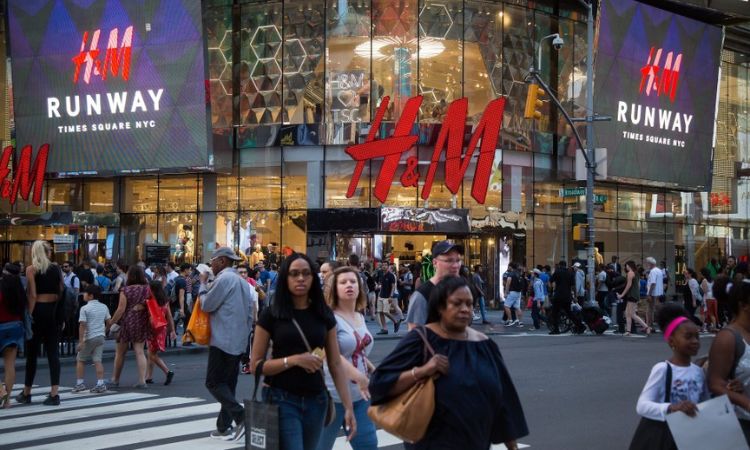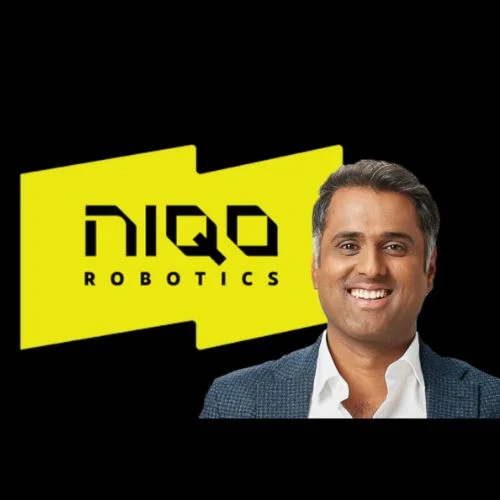Helena Helmersson, H&M Group Chief Operating Officer, has been with the company since 1997. She was appointed CEO in January 2020. She has built strong devotion to the firm over the years, as well as a significant understanding of how a contemporary, flexible distribution system is set up, as well as what the foreseeable future of retail will involve.

Img Source: https://hmgroup.com/
She launched revolutionary and award-winning programs to incorporate sustainability into the H&M company as head of Sustainability, opening the path for other companies to follow suit. Veckans Affärer, Sweden’s leading business magazine, named her the most powerful businesswoman in Sweden in 2014.
Helena possesses both a keen eye and the skill to convert the fashion business into a positive force.
Appointing her as the CEO was a brainer, and her professional accomplishments demonstrate the same.
Helena Helmersson was appointed CEO of the group in January 2020, succeeding Karl-Johan Persson, making her the company’s first woman and non-Persson family member to occupy the role.
Helmersson was promoted to section manager of procurement in 1999 and thereafter transferred to Bangladesh as an HR manager of manufacturing till 2007. She then relocated to Hong Kong to work as the manager of a department for knickers at the manufacturing office. After five years overseas, she returned to Stockholm in 2010 to assume the helm as CSR manager, overseeing social responsibility and the supply chain.
Her long-term goal for H&M is to increase the company’s sustainability as one of the world’s leading clothes producers and retailers. The organization’s sustainability approach, which began in the 1990s, has resulted in more open supply chain operations and a “closed loop” of textiles with the business’s assortment of services, where clients may send in garments to be recycled. H&M also unveiled their responsible collection, which is made up of 20% recycled fibers.
One of her primary objectives is to work with public policymakers and other stakeholders in regional markets. “Having a code of conduct isn’t enough. It is about constructing systems in these nations. It’s not as simple as a brand announcing what a specific pay level should be. We need to put in place the infrastructure to make it happen locally.” – she said in an interview.

Img Source: https://www.news18.com/
H&M appears to have solved the conundrum of combining low prices with the most recent runway emerging patterns.
While H&M is not the only fast fashion retailer, the Swedish retailer has a distinct business model. Unlike Zara, H&M does not produce its items in-house, instead outsourcing production to over 900 external vendors worldwide, primarily in Europe and Asia, who are monitored by 30 strategically situated monitoring offices.
One of the reasons for H&M’s success is its rapid fashion strategy. Although fast fashion is popular today, with many businesses adopting it, it was unheard of decades ago. People used to have to save for months in order to acquire a trendy item for a particular event. But, of course, the time existed before top fashion brands began making runway pieces readily available. This action launched a new clothing line and enabled people of all socioeconomic backgrounds to afford high-end designer wardrobes.
How did the H&M fashion brand become so widely recognized in such a brief amount of time? Keep reading to find out.
Fast fashion: This became more popular among customers. Fortunately, H&M strategically positioned itself to capitalize on this expansion by catering to the middle class. The business concept of the brand is clear and uncomplicated. The brand claims and continues to give fashion and quality at the greatest pricing. They provide apparel for men, women, and children, and all designs are inspired by the newest fashion trends. So, from a basic piece to a high school prom attire, the H&M fast fashion brand has it at an affordable price.
The fast-fashion method also means that fresh clothes are shipped to the company’s outlets in over 60 different locations on a daily basis. One of the primary explanations why people keep returning is the constant influx of new items.
Collaboration of Brands: Collaboration is also another key to H&M’s success. The brand’s marketing approach aims to position itself as a luxury-style option. The brand has an annual assortment with a luxury designer house to market this. This marketing strategy is a key aspect that distinguishes H&M’s quick fashion businesses from competitors such as Zara. It hasn’t stopped since H&M began collaborating in 2004. Karl Lagerfeld, Versace, and Balmain are among the top partnerships of this company. To generate interest in their new collaborative campaigns. They leverage their social media presence to make items rare. H&M understands that when luxury clothing meets high-street costs, fashionistas go insane.
Attention to the Environment: H&M fast fashion presents itself as an ecologically aware company. According to CEO Karl-Johan Persson, the company’s goal is to render fashion sustainable and sustainability trendy. Sustainability is a rising issue that is gaining prominence in the twenty-first century. As an outcome, many stakeholders have grown more concerned about their impact on the environment. With their Conscious line, H&M is not leaving the fray. The business promises that with this collection, it will be easier for customers to pick sustainable solutions. Furthermore, it made these sustainable collections accessible to the average consumer.
Product Life Cycle is Short-term: Unlike other fashion firms, H&M’s fast-fashion line strives to create ensembles with a short product life cycle. Most people would consider it a dangerous plan, but H&M executes it so successfully that it offers them a competitive advantage. This marketing plan may do this in two crucial areas, which we shall discuss further below.
Advertising that is both inclusive and targeted: In their Stockholm headquarters, the H&M fast fashion brand creates its advertising campaign. The brand, on the other hand, assigns each regional marketing team the duty of personalizing campaigns to their respective local markets. As an outcome, the company employs models from various cultural backgrounds, features, styles, and even ethnicities. The goal is to demonstrate to customers that the brand is all-inclusive. For instance, one of H&M’s commercials in 2015 featured Mariah Idrissi, who sported a hijab in the marketing film.
Plus-size models, those with amputations, and other diverse persons are also used by this company. People love the brand because it features a diverse group of people who follow their own fashion rules. H&M wants to demonstrate to shoppers that they may adhere to fashion norms or invent their own. You might also opt to break no regulations at all. With the H&M fast fashion brand, research is essential. The brand makes an attempt to understand its local audience. They investigate local customs and make certain that they do not violate them during their local efforts.

Img Source: https://www.wsj.com/
While most people are surprised by the brand’s continued success, this article explains the factors that contributed to the brand’s success. Although the company is well-known for its fast-fashion strategy, which has helped it become one of the leading fast-fashion companies, this article discusses other strategies that have helped H&M (an initialism for Hennes & Mauritz) become a huge success in recent years. Moving ahead, Helmersson is committed to converting H&M into a truly circular firm with a positive environmental effect. What is evident is that she is committed to H & M to remain an industry leader in sustainability.















